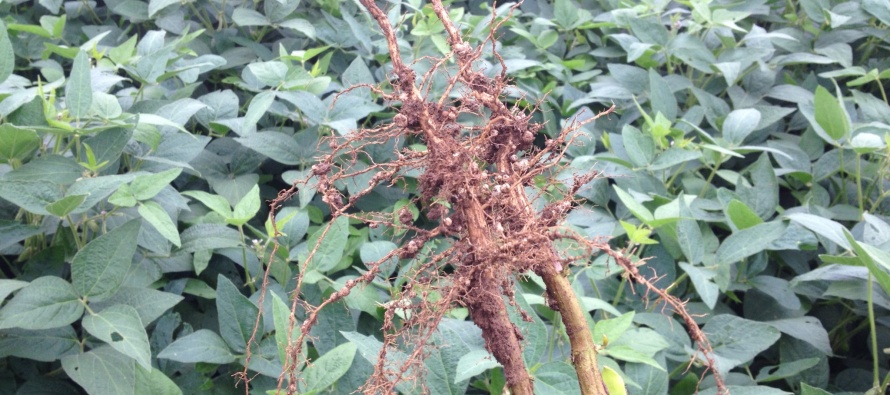Flooded soybean fields – Do I need an inoculant?

Related Articles
- 2010 Soybean And Corn Variety Trial Data 3
- 2010 Row Crop Short Course Video Links 0
- March Ag Supply and Demand Report Recap 0
Latest Tweets
Soybean is a leguminous crop that obtains its nitrogen (N) from an association with a bacterium in the soil called Bradyrhizobium japonicum. The association between the soybean and the bacterium takes place in nodules that form on the soybean roots during the growing season. Fields that have been planted to soybean in the past have native populations of the bacteria already living in the soil. The general rule of thumb is that if soybeans have been planted in a particular field in the past 3 years, then there are likely adequate native Bradyrhizobium populations in the field to properly nodulate this year’s soybean crop.
But what if your field has been flooded…?
After record rainfall in March, many fields in the Delta are still either underwater or are just now beginning to dry up as water levels in creeks and rivers decline. Since Bradyrhizobium japonicum is a living thing that requires oxygen to survive, it is easy to understand how extended flooding may decrease bacterial populations and potentially cause nodulation problems in this year’s soybean crop. Previous research out of the Midwest has shown decreased Bradyrhizobium populations in previously flooded fields.
If you have a soybean field that was only flooded for a day or two and drains well, then Bradyrhizobium populations are probably alright and you can consider foregoing an inoculant. However, if you have fields that were underwater for a week or more, then it would probably be a good idea to use an inoculant in these fields.
There are dozens of inoculant products available. The two main types of inoculant carrier are peat-based products and liquid products. Peat-based products are your planter-box treatments, while liquid products are applied directly to the seed. Prices for these products range from $1-2/acre to well over $10/acre. Research in both the Midwest and Mid-South have largely not shown any advantage for premium inoculants over less expensive products. So if you are going to use an inoculant, choose one based on price, availability, and how a certain inoculant fits into your production system.
The insurance value of inoculants
Many agronomists recommend inoculants on all soybean, regardless of soil situation, as a form of “cheap insurance.” At only $1-2/acre this can make sense given the high costs of applying N fertilizer to a soybean crop that failed to nodulate. If adding an inoculant will help you sleep better at night, then by all means add one. However, if your fields have a recent history of soybean production, weren’t flooded for extended periods of time, have a pH above 6.0, and aren’t sandy, then inoculants are something that you might consider cutting in 2016.
Nodulation begins around V2, but it takes a couple of weeks before the nodules begin to produce N for the soybean plant. Around V4 or V5 go out and dig up some soybeans to check for nodulation (actually dig, don’t just pull the plants out of the ground-this can break the nodules off). If you see nodules on the roots, then you are in good shape. However, if you fail to see nodules, that may be cause for concern. Keep checking the field, as sometimes nodules take longer to form based on soil conditions. A soybean field that truly fails to produce adequate nodules will look a sickly lime-green color, not the deep dark green normally associated with healthy soybeans. However, these cases are rare.
If you have questions about inoculating soybean, please give us a call.





A replicated study I did I ms delta following 5 weeks of flooding showed good nodulation and no loss in yield.
I still recommend inoculation.